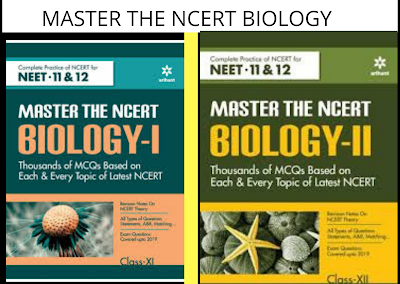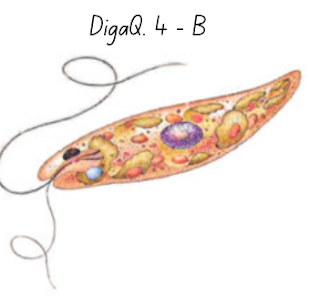NCERT Line by Line Question: Biological classification Class 11. Study Class 11 Biology NCERT Chapter 2 with our detailed ncert line by line questions, answers, and explanations. Prepare for NEET with our Biological Classification questions and NCERT solutions. Ace the living world exam!
Ncert line-by-line questions for Class 11 Biology NCERT Chapter 2 "Biological Classification." Designed to aid in
Neet preparation, these questions provide a thorough understanding of the concepts discussed in the chapter.
NCERT Line by Line Question: Biological Classification Class 11. Study Class 11 Biology NCERT Chapter 2 with our detailed ncert line by line questions, answers, and explanations. Prepare for NEET with our biological
Classification questions and NCERT solutions. Ace the living world exam!" Covering topics such as the
Biological Classification Monera, Protozoa , Fungi this page is a valuable resource for anyone studying biology in Class 11. Whether preparing for
NEET or just want to brush up on your knowledge, this page offers a comprehensive approach to studying the living world. Use these questions to test your understanding, improve your score, and master the subject matter. Get a strong foundation in the living world with this NCERT line-by-line question resource.
Ncert line-by-line Biological Classification designed so that we ensure all topics from
ncert class 11 Biological Classification w
biology ncert line-by-line questions covering all previous year questions and important topics.
 |
| NCERT Line by Line Question: Biological Classification Class 11. Study Class 11 Biology NCERT Chapter 2 with our detailed ncert line by line questions, answers, and explanations. Prepare for NEET with our biological Classification questions and NCERT solutions. Ace the living world exam!" |
1) ______ was the earliest to attempt a scientific basis of classification.
2) Aristotle classified plants into _____,_____ and______
3) He divided animals into ____ no of groups, one with ______ and one those did not.
4) Monera cell wall is made up of _______ and ________
5) All protists don't contain a cell wall. T/F
6) Loose tissue body of organisation is present in _______
7) Monerans cannot be saprophytic. T/F
8) Holozoic mode of nutrition is present in _______ kingdom,
9) The Animalia kingdom contains saprophytic animals. T/F
10) Whittaker gave 5 kingdom classification in ______ year.
11) Criterias used by Whittaker for classification was (5) (NEET)
12) Earlier Chlamydomonas and Spirogyra were placed together under _______
13) Kingdom ______ has brought together ________ and ________ (having cell wall) with
______ and ______ (lacking cell wall). (NEET)
14) Phylogenetic means ? (NEET)
• KINGDOM MONERA
15) _______ are the sole members of kingdom monera.
16) 4 categories based on shape -
17) Bacterial structure is very complex, yet they are very simple in behavior. T/F
18) The ________ shows the most extensive metabolic diversity. (NEET)
19) Vast majority of bacteria are autotrophs. T/F
ARCHAEBACTERIA
20) _________ bacteria live in some of the most harsh habitats
21) Name the 3 divisions of archaebacteria and their habitat. (NEET)
22) Archaebacteria differs from others by having _________. (NEET)
23) The reason for the survival of archaebacteria in extreme conditions is ?
24) _______ are present in the gut of ruminants. (NEET)
25) Methanogens are chemoautotrophs/chemoheterotrophs.
• EUBACTERIA
26) Eubacteria have rigid cell wall. T/F
27) Eubacteria, if motile, contains cilia. T/F
28) Cyanobacteria is also called ________ have ______
type of chlorophyll.
29) Cyanobacteria can't be filamentous. T/F (NEET)
30) Cyanobacteria can be colonial. T/F
31) The colonies of cyanobacteria are surrounded by ________
32) They form ______ in polluted water.
33) Some can fix atmospheric nitrogen in specialised cells
called _________
34) Ex of bacteria containing heterocyst are (2) (NEET)
35) ____________ bacteria oxidise various inorganic substances
such as _____, _____, ______ for energy. (NEET)
36) ___________ play a great role in recycling of nutrients like (4)
37) ____________ bacteria are most abundant in nature. (NEET)
38) Nostoc is a filamentous/unicellular cyanobacteria. (NEET)
39) _________ are helpful in making curd from milk, production of antibiotics. (NEET)
40) Heterotrophic bacteria help in fixation of nitrogen in roots. T/F
41) Name the 4 well known diseases caused by bacteria and their causative agent. (NEET)
42) Bacteria produce spores in favorable conditions. T/F
43) In bacteria, a primitive type of sexual reproduction is also present. T/F
44) 3 ways through which bacteria reproduce -
45) 3 ways through which bacteria do sexual reproduction -
46) _________ completely lack cell wall. (NEET)
47) Mycoplasma cannot survive without oxygen. T/F (NEET)
48) __________ are the smallest living organism. (NEET)
49) Mycoplasma are never pathogenic. T/F (NEET)
• KINGDOM PROTISTA
50) All ________ are placed under Protista. (NEET)
51) Groups under protista are (5)
52) Members of protists are primarily _______
53) This kingdom forms a link with other kingdoms. T/F
• CHRYSOPHYTES
54) This group include ______ and _______ (NEET)
55) They are found only in marine water . T/F
56) They are microscopic and are planktons. T/F (NEET)
57) What are planktons ?
58) Most of them are _________
59) The cell wall form two thick/thin overlapping shells, which fit together as in a _______ (NEET)
60) The walls are embedded with _____ and thus the walls are destructible/indestructible. (NEET)
61) What is diatomaceous earth ? (NEET)
62) Diatomaceous earth is used in (3).
63) _______ are chief producers of oceans. (NEET)
• DINOFLAGELLATES
64) They are mostly marine/free water and ________
65) They appear of 5 colour - (Rang birange :))
66) The cell wall has ___________ in the outer surface.
67) They have 2 cilla. T/F
68) Both the flagella are perpendicular to each other. T/F
69) Red dinoflagellates ex (1)
70) Red tides occur due to -
71) Red tides are good for marine fishes. T/F
• EUGLENOIDS
72) Majority of them are marine/fresh water.
73) Are found in stagnant water T/F.
74) Instead of cell wall, they have ______ which is rich in _______
75) Euglenoids have a flexible body. T/F
76) Euglenoids have one single long flagella. T/F
77) Pigments of euglenoids are identical to those present in ________
78) They are permanent autotrophs. T/F
79) Ex - (1)
• SLIME MOULDS
80) Slime moulds are __________ protist.
81) Under suitable/unsuitable conditions, they form a
aggregation called _________
82) Plasmodium may spread over several feet. T/F
83) During favorable conditions, the plasmodium
differentiates and forms fruiting bodies bearing spores at their tips. T/F
84) The spore possess true/false walls.
85) The spores are dispersed by _______
• PROTOZOANS
86) All protozoans are _________
87) Protozoans live as _______ or _______
88) _______ are believed to be primitive relatives of animals.
89) 4 major groups of protozoans are -
90) Habitat of ameboid protozoans.
91) They capture their prey by ________ (NEET)
92) They have _____ shells on their surface.
93) Ex of ameboid parasite
94) Habitat of flagellated protozoans
95) Flagellated protozoans example and the disease it cause -
96) Ciliated protozoans have cavity called _____
98) Sporozoans have a ______ spore like stage.
99) Sporozoans ex (1) and the disease it caused
KINGDOM FUNGI
100) Fungi are cosmopolitan. T/F
101) The fungi kingdom only contains multicellular organisms. T/F
102) Their bodies contains long, ______ like structures called ______
103) The network of hyphae is called _______
104) What are coenocytic hyphae ?
105) The cell wall is composed of ______ and ________ (NEET)
106) Fungi are also parasitic. T/F
107) Symbionts ex (2)
108) Rep by vegetative means by (3)
109) Rep by asexual means by spores called _______or _______or_______
110) Sexual rep by (3)
111) The spores are produced in _______
112) Sexual cycle involves 3 steps -
113) Dikaryophase is present in (2)
114) In dikaryon cell, 2n condition is present. T/F
115) Basis of division of the kingdom is (3)
• PHYCOMYCETES
116) Phycomycetes can't be obligate parasites on plants. T/F
117) Mycelium is aseptate/septate and ______
118) Asexual rep by (2)
119) These spores are end/exogenously produced in ________
120) A ______ is formed by fusion of two gametes.
121) Gametes are of 3 types -
122) Example 3
123) _______ is a parasitic fungi on mustard.
ASCOMYCETES
124) Commonly known as ______
125) Yeast scientific name is ___________ (NEET)
126) Modes of nutrition seen are - (4)
127) Mycelium branched/unbranched and septate/aseptate.
128) Asexual spore are -
129) Conidia are produced on endo/exogenously.
130) Conidia on germination produce ________
131) Sexual spore name ______ and produced endo/exogenously.
132) Sexual spore produced in _____ which are ____ like.
133) These asci are arranged in different types of fruiting bodies called _______
134) Ex (3)
135) ________ is used extensively in biochemical and genetic work. (NEET)
136) ______ and _______ are edible. (NEET)
BASIDIOMYCETES
137) Commonly known forms are _______, ______ or _______ (NEET)
138) Ex of parasitic basidiomycetes. (2)
139) Mycelium branched/unbranched and septate/aseptate.
140) Asexual spores are generally found. T/F
141) Vegetative rep by ________ is common.
142) Sex organs are present. T/F
143) Sexual reproduction is present . T/F
144) Plasmogamy occur through ______
145) The resultant structure is ________ which ultimately give rise to _______
146) Karyogamy and meiosis occur in _______
147) Basidiospores are endogenously/exogenously produced on ______
148) Basidia are arranged in fruiting bodies called ________
149) Ex (3) (NEET)
DEUTEROMYCETES
150) Commonly known as ________ (NEET)
151) They are imperfect fungi because - (NEET)
152) Reproduce by spore called _______
153) Mycelium features (2) (NEET)
154) Mode of nutrition is (3) (NEET)
155) They help in mineral cycling. T/F (NEET)
156) Ex (3)
• KINGDOM PLANTAE AND ANIMALIA
157) Ex of insectivorous plant (2).
158) Ex of a parasitic plant. (1)
159) Animals stores food as _____ or _____
160) All plants are eukaryotic chlorophyll containing organisms. T/F
• VIRUSES, VIROIDS, PRIONS AND LICHENS
161) In the Whittaker classification, he didn't include ________ organisms.
162) Virus have ____________ structure outside the living cell.
163) "Virus" means _______ or ________
164) ___________ gave virus its name.
165) _________ recognised in year ____ certain microbes as causal agents of mosaic disease of
tobacco. (NEET)
166) ___________ saw that extract from infected plants cause infection in healthy plants
hence called the fluid _______ in year ______ (NEET)
167) ____ (year) showed that viruses could be crystalilsed. (NEET)
168) Virus crystal consist largely of ________
169) Virus are not obligate parasite, they can be helpful too. T/F
170) Virus can contain both RNA and DNA. T/F
171) A virus is in short a ____________
Virus infecting plant have ______ genetic material.
173) Virus infecting animals have ______ genetic material
74) Bacteriophages means ?
175) Genetic material of bacteriophages is
176) The protein coat is made up of _______ (NEET)
177) These capsomeres are arranged in _____ or _____
geometric forms.
178) Viral diseases in humans ex. (5)
179) In plants, viral diseases are (5)
180) Viroids were discovered by ______ in _____ year.
181) Viroids are bigger than virus. T/F (NEET)
182) It is a free RNA/DNA. (NEET)
183) It lacks a protein coat. T/F
184) The RNA of viroid was of high molecular weight. T/F (NEET)
185) _______ are mis-folded proteins.
186) Prions cause __________ in cattle and its analogous variant _________ in humans.
187) Algal component of lichen is called _______ and fungal is called _______
188) Fxn of algal and fungal component respectively are -
189) Lichen are very good indicators of ________. They don't grow in ______ (NEET)















